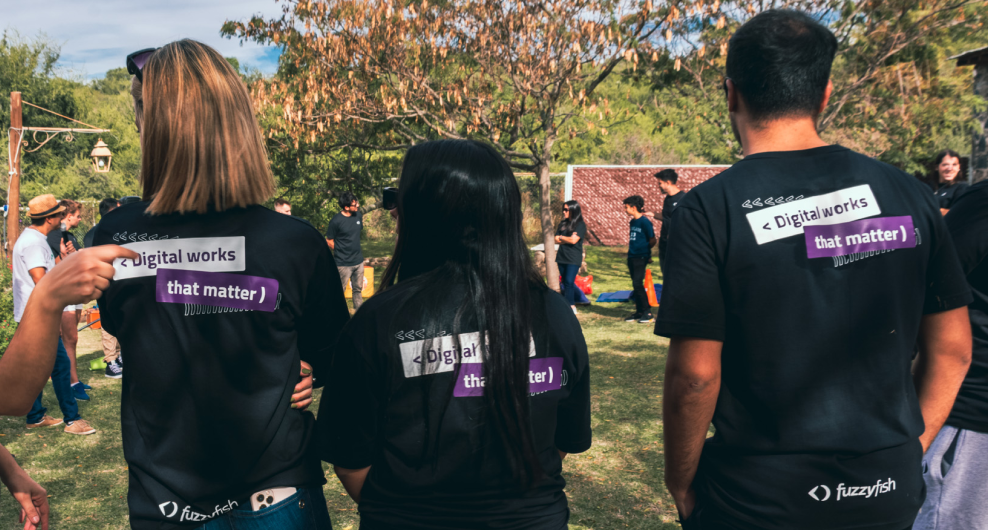The MVP, or minimum viable product, is a critical concept in the startup world. The idea is to create a bare-bones version of your product or service and get it out to market quickly to gather feedback and learn from real users.
In entrepreneurial terms, tangible or digital, what the atom is to the matter is the smallest part of something you work hard to succeed in a more significant way. Faster and safer.
While running the process to create a new product carries on every uncertainty inside the development team and a lot of wondering about the UX view. That is because some theories were born to check and test customer working and reception BEFORE developing a Minimum Viable Product and walk strong with your ideas.
An MVP also becomes the first version of your product that speaks about the marketing prospect from an App or new software and ensures up to 25% of resources, saving an unnecessary and predictable capital risk. So, why does MVP matter?
What is an MVP?
The MVP is a product with just enough features to be usable by early customers, who can then provide feedback for further product development. The MVP is not a stripped-down version of the final product but is also not a fully-featured product.
The MVP is the first step in what is known as the Lean Startup methodology, which is a way of starting and running a startup that is focused on minimizing waste and maximizing learning.
Why MVP matters in short
This approach has several advantages. First, it allows you to test your hypotheses about what users want and need without wasting time and money on development. Second, it will enable you to learn from users and make changes before you have a fully finished product.
The MVP is also a great way to get started if you don’t have much experience building products. By starting small, you can gain valuable experience and knowledge without putting yourself at too much risk.
So, if you’re starting a new project or product, don’t be afraid to experiment and start with an MVP. It could be the key to your success.
What is not an MVP?
MVP is not a ‘Prototype’ or a ‘POC ‘ (Proof Of Concept). Even the concept is confused by a lot of Devs fans, ‘product’ (an MVP-product), as its name speaks, is a functional starter but not an incomplete solution for an asked need that is not just a ‘Prototype’ because this is not going on the field, at the right time, to catch opinions and analyze the relevance to the people.
The purpose of a prototype is to explore and verify proposals before discussing them with stakeholders and ultimately delivering final versions to development teams for their realization of what is not a POC. An MVP provides a complete description of an occurrence or idea, representing its prospective feasibility, success, and impact according to suggested usability, properties, capabilities, and overall structure.
MVP examples
The new century. From a little earlier, in the ’90s, the concept of an MVP was cooked primordial from too many ideas, tags, steps, or labels of the complete how-to manual from XXI ways to get noticed. So, the references are the flat view, and each one of these revolutionary digital brands shines by itself because they work and grow.
Then is just a check question about traditional and practical solutions such as Airbnb, Amazon, Uber, Facebook, Dropbox, Snapchat, and indeed all the new startups at date. The standard choice that all these masters of UX experience token at the first moment was the care walking, the proper perspective, trust in users’ media reactions, and great ideas created from natural observation:
Dropbox
The first version of Dropbox was a simple tool that allowed users to sync their files between computers. It was nothing fancy, but it did the job and helped people solve a real problem.
Airbnb
The early versions of Airbnb focused on helping people find a place to stay when traveling. They didn’t have all the bells and whistles of today’s platform, but they had the core functionality that people needed.
Dropbox and Airbnb started small and built out their products over time based on user feedback. And both companies are now huge successes.
So, there you have it: MVPs matter because they allow you to experiment, learn from users, and make changes without putting too much at risk. If you’re starting a new project, don’t be afraid to start small and iterate until you find a winning formula. MVPs are a vital part of the startup process.
The MVP is also not a product you release and then forget. An MVP is meant to be a living, breathing thing that you continue to work on and improve over time. Remember, the goal is to learn from users and make changes based on that feedback. So, don’t be afraid to experiment and iterate on your MVP until you find a winning formula.
Benefits of building an MVP
Fortunately, there are many reasons and several benefits to building an MVP. These include:
- Allowing you to test your hypotheses without sinking a lot of time and money into development
- It gives you a chance to learn from users and make changes before you have a fully finished product
- Helping you gain valuable experience and knowledge if you don’t have a lot of experience in building products
- Starting small and focusing on the essentials
- Being a living, breathing thing that you continue to work on and improve over time
Same issues can be talked like check-listed points to mark when the exercise looks like it must:
- Validate the hypothesis
- Сollect feedback from real-time UX’s
- Adjust the right solution
- Expand and catch the audience more quickly
- Start making a profit before it is complete by selling the MVP
- Encourage the investors to add the project
- Save money on market and target audience analysis by combining analysis with development
In the end.
- “Imagine, MVP product is like a tasting sample of the fancy multi-tier wedding cake. Before ordering it for reception, you get a couple of pieces to choose biscuits and frosting, provide your feedback and let the baker make corrections.”
How does a software factory start to plan an MVP?
Although general MVP concepts are very accessible to public learning and practicing to build a commutable itinerary away the goal, just for this reading, we could highlight some basis (keywords: Problem-Public-Competitors)for fast-memo, such as:
- First, it must determine the trouble or need (or hobby) to resolve. Answer some big questions about targets, features, and hooks at clients in a previous and safe phase.
- Find an objective public to compact it at maximum. Meanwhile, Devs create some ‘avatars’ from it, checking statistic information such as ages, sex, education level, earnings, etc.
- Analyze the market objectively before your proposal, watching and researching potential competitors and proceed to recheck the balance, discovering weaknesses/advantages from others to set your hypothesis and marching behavior from MVP that belongs to you.
- Establish the UX’s flow. It means the path to follow while interacting with the product. This way may assimilate where and what features are more relevant to them, so develop the design, sequence algorithm, and many more periclase and valuable details.
- Try testing A/B mode on the MVP. Alpha tests are this class of proofs when it is evaluated by the immediate environment, as own Devs and closer people; and Betas ones include the same evaluation from real users that try the product at purpose during a bit time, to add elaborated opinions about it. This focused and cycling data source is dynamic until the result is caught.
Final thoughts
The MVP is a crucial part of the startup process. It allows you to test your hypotheses without investing time and money into development. MVPs also will enable you to learn from users and make changes before you have a fully finished product.
Building an MVP can be a great way to gain valuable experience and knowledge if you don’t have much experience building products. MVPs also allow you to start small and focus on the essentials.
An MVP is not a finished product but a living, breathing thing that you continue to work on and improve over time. Ultimately, the goal of an MVP is to validate your hypotheses, collect feedback from users, and adjust your solution as needed.
Remember:
- MVPs may be used to test the product and the marketing. For example, cookies, mail lists behaviors, conversions, ROI, costs, operative spending, and design.
- The truth is that several types of MVPdo exist. In the middle of all this previous information, suddenly, you would find additional tags that define each process of creating and developing. Thus, it would help if you faced these main things as Wizard of Oz, which is suitable for testing the solution, counting with a few features. Piecemeal is the best to try ideas, already existing services, and sites without paying extra resources. Concierge MVP refers to a human-based resolving method with solutions at the reviews taken from real subjects as first ‘consumers’ and picks up constructive feedback winning time; and Single Feature type, called ‘One painkiller’ as a template to verify the technical feasibility of the baby product. Say just the meaningful ones. Only.
- You can find and onboard an in-house developer or outsource the process to build an MVP. The excellent advice is to choose an off-site team for MVP product development. Two reasons: it is seamless and budget-friendly.




